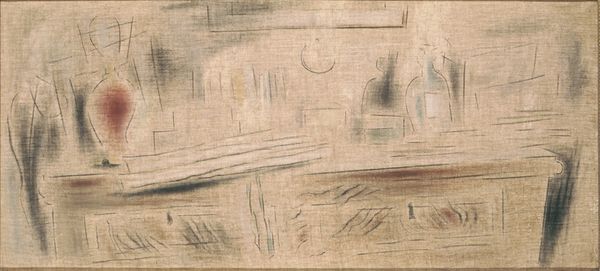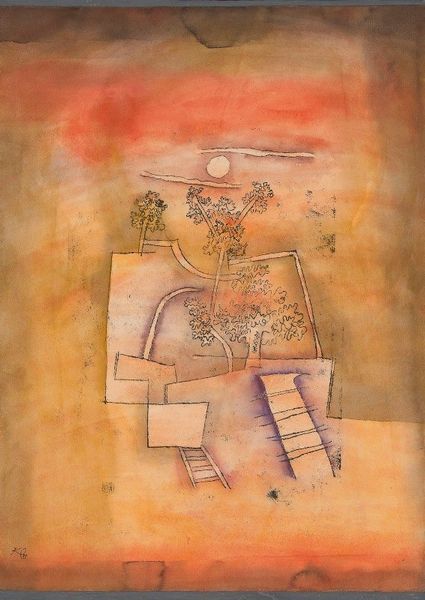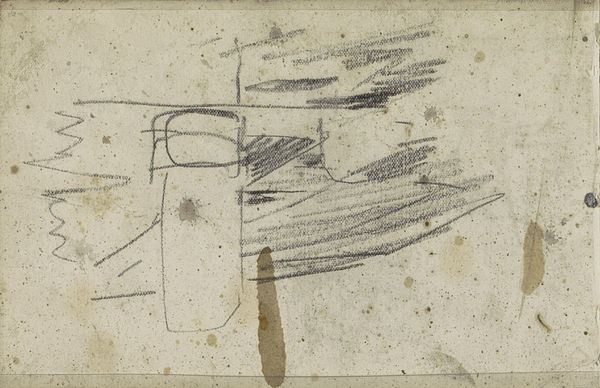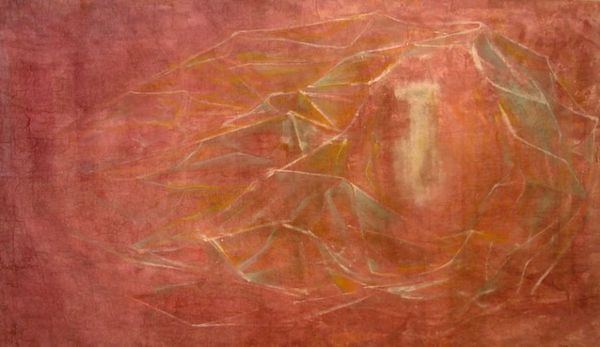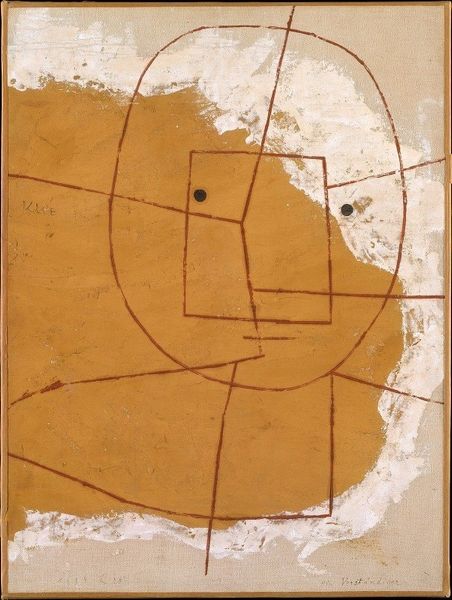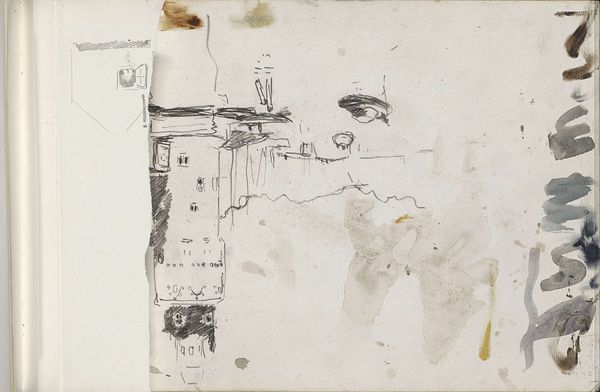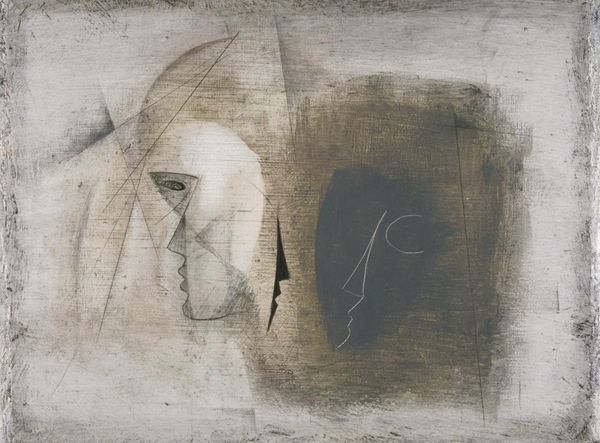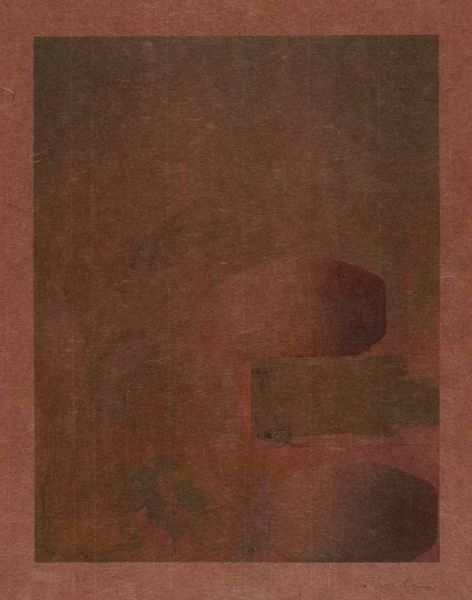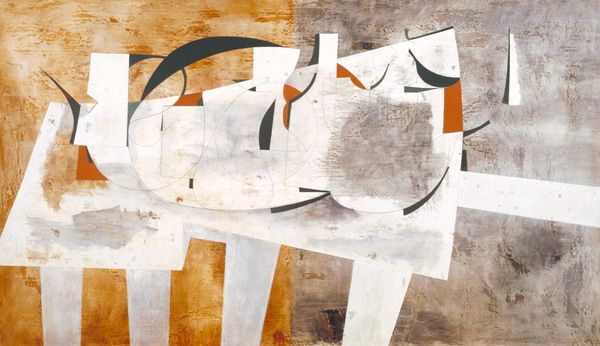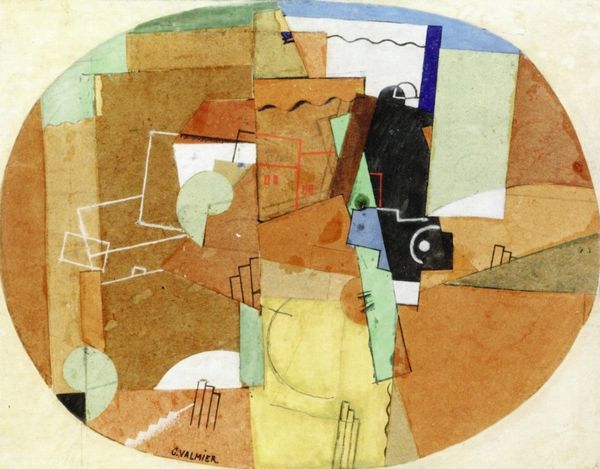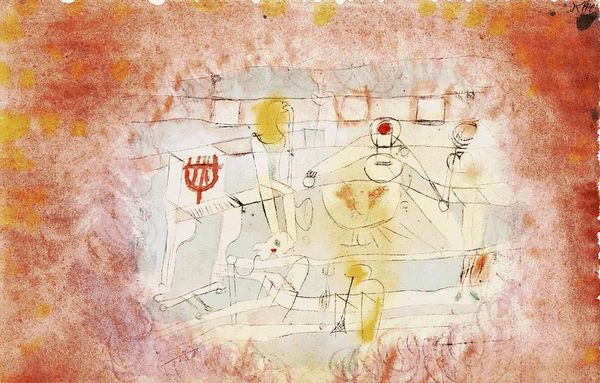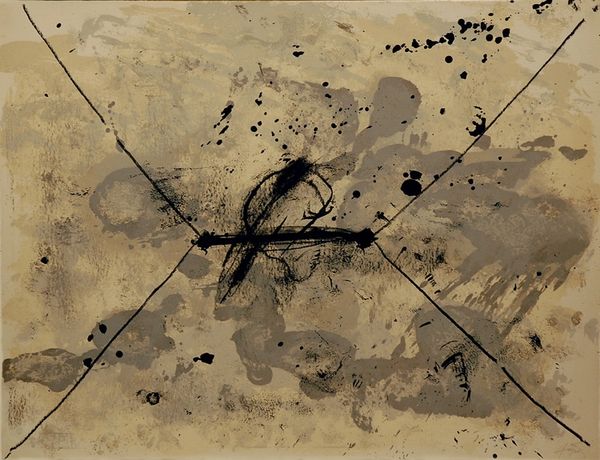
Dimensions: support: 746 x 1200 mm frame: 800 x 1255 x 60 mm
Copyright: © Angela Verren Taunt 2014. All rights reserved, DACS | CC-BY-NC-ND 4.0 DEED, Photo: Tate
Curator: This is Ben Nicholson's painting, "1932," housed here at the Tate. Editor: It's incredibly subtle, isn't it? Almost ghostly. The layering creates a sense of depth, but it’s also very quiet, understated. Curator: Nicholson was a key figure in the British abstract movement. During the 1930s, he was deeply influenced by European modernism and this work reflects the socio-political tensions that fueled abstraction. Editor: Absolutely, and it’s fascinating how this quiet abstraction speaks to broader themes of the period. The subdued palette hints at a certain austerity, perhaps a reflection of the interwar atmosphere, and the layering feels representative of the complex social strata of the time. Curator: He often used a technique of layering paint and then scraping it away to reveal the layers beneath. Editor: And the lines almost appear like cartography or an architectural plan. It's about exploring the relationship between form and space, a kind of liberation from the old world after the first world war. Curator: It is the tension between these geometric forms and the organic, almost haphazard lines that really defines the work. Editor: It certainly gives a modern feel! It’s work that continues to resonate, asking us to rethink conventional modes of representation.
Comments
tate 6 months ago
⋮
http://www.tate.org.uk/art/artworks/nicholson-1932-painting-t01189
Join the conversation
Join millions of artists and users on Artera today and experience the ultimate creative platform.
tate 6 months ago
⋮
In 1932 Nicholson visited Paris and saw work by Joan Miró, Alexander Calder and Hans Arp. He described their effect on him as ‘a new freedom ... a kind of liberation’. Incised lines dance into and along the surface of this painting. The lines are fluid, playful and largely non-descriptive (although outlines of bodies can perhaps be read into this painting). Nicholson is occupied here with conveying the painting’s status as a physical object. In discarding the need for representation, Nicholson’s aim was ‘to animate a thing, to create new life by marrying idea to a physical object’. Gallery label, February 2010
